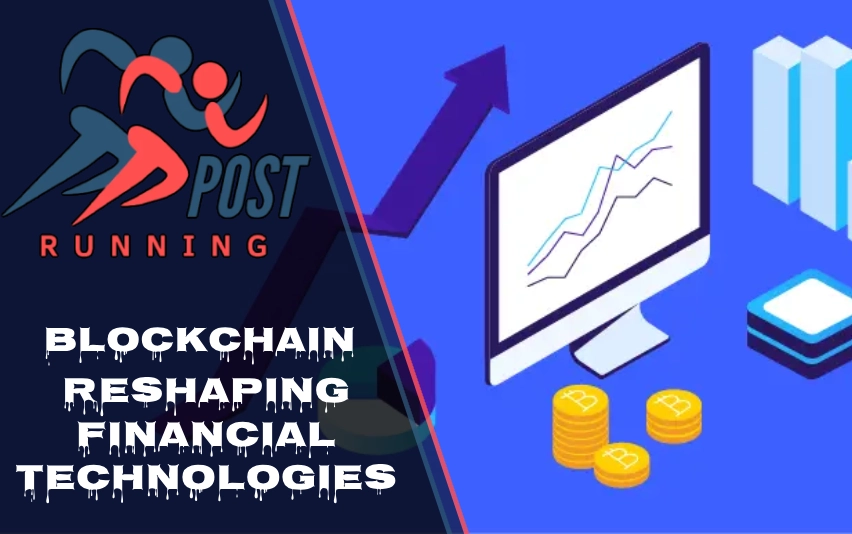Blockchain technology is no longer just a buzzword; it’s a transformative force reshaping the financial world. From enabling secure and transparent transactions to powering decentralized finance (DeFi), blockchain is redefining how we interact with money and financial services. This article explores how blockchain is reshaping financial technologies, diving into its key applications, benefits, challenges, and its ongoing impact on fintech.
Introduction
Blockchain technology, at its core, is a decentralized ledger that records transactions across multiple computers. Unlike traditional systems that rely on intermediaries like banks or payment processors, blockchain operates on a peer-to-peer network. This means transactions are verified by participants in the network rather than a central authority.
But why does this matter? Well, blockchain enhances transparency, security, and efficiency—three pillars that traditional financial systems often struggle to balance. It’s no wonder that blockchain has become a cornerstone of financial technology (fintech). With growing adoption across industries, it’s clear that blockchain is more than just a trend; it’s a revolution in how we manage and exchange value.
What is Blockchain in Financial Technologies?
A Simple Definition of Blockchain
At its simplest, blockchain is a digital ledger where every transaction is recorded in blocks and linked together chronologically. These blocks are immutable, meaning once data is recorded, it can’t be altered or deleted. This makes blockchain incredibly secure and trustworthy.
In the context of financial technologies, blockchain enables decentralized finance (DeFi), which removes the need for intermediaries like banks or brokers. Instead, financial services such as lending, borrowing, and trading are executed directly between users through smart contracts—self-executing agreements coded on the blockchain.
Key Statistics That Show Blockchain’s Growth
The numbers speak volumes about blockchain’s impact on fintech:
- The global blockchain market in fintech was valued at $10.02 billion in 2022 and is projected to grow at an impressive 87.7% compound annual growth rate (CAGR) until 2030.
- Decentralized Finance (DeFi), a major application of blockchain, had a market value of $13.61 billion in 2022, with an expected CAGR of 46%.
These figures highlight how blockchain adoption is accelerating across the financial sector.
Key Applications of Blockchain in Fintech
Blockchain’s versatility has led to its integration into various aspects of fintech. Here are some of its most impactful applications:
Digital Payments
One of the most popular uses of blockchain is in digital payments. Blockchain enables fast, secure, and low-cost cross-border transactions without relying on traditional payment networks like SWIFT.
For instance:
- Platforms like Coinbase allow users to send cryptocurrency payments globally in real-time.
- Tokenized fiat currencies, such as stablecoins like USDC or Tether (USDT), provide price stability while leveraging blockchain’s efficiency.
This eliminates hefty fees and delays associated with traditional banking systems.
Trading Platforms
Decentralized exchanges (DEXs) are another game-changer in fintech. These platforms use smart contracts to facilitate peer-to-peer trading without intermediaries.
Examples include:
- Uniswap, which allows users to trade cryptocurrencies directly with each other.
- Pax Gold, which tokenizes gold so investors can trade fractional amounts backed by real assets.
DEXs offer greater control over assets while reducing counterparty risks.
Investment Management
Blockchain has introduced the concept of tokenization—turning physical or digital assets into tokens that can be traded on a blockchain. This innovation allows for fractional ownership of traditionally illiquid assets like real estate or art.
Benefits include:
- Improved liquidity for assets that were once difficult to trade.
- Greater transparency through immutable records of ownership and transactions.
Smart Contracts
Smart contracts automate financial agreements by executing predefined conditions without human intervention. For example:
- Loans can be automatically disbursed when collateral requirements are met.
- Payments can be triggered once goods are delivered.
This reduces paperwork, speeds up processes, and minimizes errors.
Digital Identity Management
Blockchain also addresses privacy concerns with secure digital identity management. Users can store their personal information securely on the blockchain and share only what’s necessary with service providers.
This selective sharing improves privacy while reducing identity theft risks—a critical need in today’s digital age.
Advantages of Blockchain in Financial Technologies
Blockchain isn’t just about innovation; it solves real-world problems faced by traditional financial systems. Here are some key advantages:
Cost Reduction
By removing intermediaries like banks or brokers, blockchain significantly reduces transaction fees and operational costs. For businesses handling large volumes of transactions, this translates into substantial savings.
Enhanced Security
Blockchain’s cryptographic design ensures that transactions are tamper-proof and resistant to cyberattacks. With immutable records stored across multiple nodes, fraud becomes nearly impossible.
Transparency
Every transaction on a public blockchain is visible to all participants. This level of transparency builds trust among users and simplifies regulatory compliance for businesses.
Financial Inclusion
Blockchain opens up access to financial services for underbanked populations worldwide. With just an internet connection, individuals can participate in global finance through decentralized platforms—no bank account required!
Challenges in Adopting Blockchain
Despite its many benefits, adopting blockchain isn’t without challenges:
- Scalability Issues: As transaction volumes increase, many blockchains struggle with slow processing speeds and high fees.
- Regulatory Uncertainty: Different countries have varying regulations around cryptocurrencies and blockchain applications, creating legal hurdles for businesses.
- Integration Challenges: Transitioning from traditional systems to blockchain-based solutions requires significant time, resources, and expertise—a barrier for many organizations.
Overcoming these challenges will be essential for blockchain’s widespread adoption in fintech.
Timeline of Blockchain’s Role in Fintech
| Year | Milestone |
|---|---|
| Early 2010s | Cryptocurrencies like Bitcoin emerge as alternative investment options. |
| ~2016 | DeFi gains traction as a decentralized alternative to traditional finance. |
| 2022 | Blockchain market reaches $10.02 billion valuation; DeFi hits $13.61 billion market value. |
| 2024 | Tokenized assets and decentralized exchanges see increased adoption worldwide. |
This timeline highlights the rapid evolution of blockchain within fintech—from niche innovation to mainstream adoption.
Conclusion
It’s clear that blockchain is reshaping financial technologies by decentralizing operations, reducing costs, and improving accessibility for users worldwide. Its applications—from digital payments to smart contracts—are not just innovative but also practical solutions to long-standing inefficiencies in traditional finance.
However, challenges like scalability and regulatory uncertainty remain hurdles that need addressing for broader adoption. Despite this, the synergy between blockchain and fintech continues to drive unprecedented innovation across the sector—making it an exciting space to watch as it evolves further.
Discover more fascinating insights—explore Running Posts Today.















